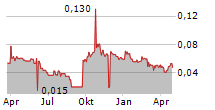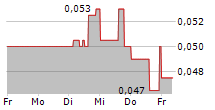Toronto, Ontario--(Newsfile Corp. - July 2, 2025) - Big Ridge Gold Corp. (TSXV: BRAU) (OTCQB: ALVLF) ("Big Ridge" or the "Company") is pleased to report results from its initial sensor-based sorting study of ore and waste materials from the Hope Brook Gold Project ("HBGP") located on the southwest coast of Newfoundland and Labrador.
Michael Bandrowski, President & CEO of the Company, commented: "We are extremely pleased with the ore sorting results completed by Tomra in conjunction with the Saskatchewan Research Council ("SRC"). These results demonstrate the ability to identify and reject unmineralized material within the current Hope Brook wireframes. Unmineralized material currently makes up approximately 25% of the resource estimate mineral envelopes. Removing this material ahead of processing will have a significant impact on future economic studies completed on the HBGP."
In the fall of 2024, Big Ridge sent selected core samples from the Hope Brook Deposit to the SRC located in Saskatoon, SK, for two preliminary studies. Core from the HBGP's 198 available drill holes was selected, representing various grade and alteration characteristics of the deposit and associated intervals of 'zero-grade' mafic and intermediate volcanics. Zero-grade material in core accounts for 20-25% of material within the Hope Brook deposit mineral resource wire frame volume based on drill intercepts. SRC completed a characterization and sortability study by a Sensor Based Sorting (SBS) dynamic test on approximately 76 kilograms of material selected from within the deposit.
Characterization and Sorting
Due to the small size of the sample, the results of the dynamic testing are predicated on visual estimation of zero-grade of the resulting mineralized material and waste separated during the tests, rather than assaying. No attempt to separate various mineralized lithologies using SBS was made. To support identification of product and waste through the tests, each piece of zero-grade core was marked on edge with a colored grease pencil which was not reactive to XRT scan. Zero-grade material could be identified and weighed with each step in the sorting process. Of the samples shipped, 30kg (39%) was marked as zero-grade. The remaining mineralized samples were not segregated into zero-grade and mineralized portions, being left as representative of their assayed core lengths.
SRC used a TOMRA COM Tertiary XRT System for the characterization and sortability studies and the dynamic test. XRT characterization scanning was successful in identifying zero-grade material supplied from mafic dyke intervals in the deposit's mineralized wire frame. XRT is a tool to assess rock density across an individual sample's surface area. After scans at various density sensitivities, a density factor of H85 was selected as best suited to detect zero-grade material. Density can vary across a single sample's volume with zones of lower and higher density appearing throughout each rock particle scanned. The characterization study showed that using a density factor of H85, low density volumes within zero-grade material accounted for less than 30% of each sample versus a much greater percentage of low density in each sample of mineralized material (See Figure 1).

Figure 1 - XRT Scan Classified Images at XRT "factor" H85 showing distribution of high (blue) and low (red) density areas. Samples 26 to 38 are zero-grade samples.
To view an enhanced version of this graphic, please visit:
https://images.newsfilecorp.com/files/4910/257492_cb3849a904e06b4c_002full.jpg
After characterization, SRC conducted the dynamic test using the TOMRA COM Tertiary XRT System, processing all remaining material from the 38 samples (69.0 kg) of Hope Brook material provided. The H85 density factor and was applied and a cascading sort using successive 40%, 30% and 20% low density representation cut-offs were used.
Table 1: Hand sorted sample weights from cascade XRT sorting
| Cascade Step | Product (kg) | Waste (kg) | Fines (kg) |
| 40% Low | 39.55 | 6.95 | 1.1 |
| 30% Low | 0.80 | 3.55 | 0.05 |
| 20% Low | 0.50 | 3.00 | 0.1 |
| Waste | 0.60 | 12.6 | 0 |
| Sub-total | 41.45 | 26.1 | 1.25 |
| Total: | *42.7 | 26.1 | |
| % of Sample | 62.1% | 37.9% |
*Fines calculated with Product to emulate sort process ahead of milling
The sorting steps show that selecting a 40% low density threshold, the XRT system removed 19.15 kg (30%-, 20%-low and waste in Table 1) of waste, representing 27.8% of tested material and 73.4% of the identified zero-grade samples.
Visual confirmation of the very high percentage of zero-grade material in ejected waste from the dynamic test suggests that Sensor Based Sorting will be effective in significantly reducing waste material identified as zero-grade ahead of processing at Hope Brook. Post-ore mafic and intermediate rocks which account for 20-25% of the mineral resource envelope can be effectively diverted allowing for optimized mill process and tailings management designs.
This preliminary test supports inclusion of SBS in bulk scale metallurgical and process testing to be completed with future HBGP feasibility studies. Further review of the sorted components retained from this test may help inform optimization of future work.
Qualified Person
William McGuinty, P. Geo., a consultant to Big Ridge, and a Qualified Person within the meaning of NI 43-101, Standards of Disclosure for Mineral Projects, has reviewed and approved the technical information contained in this news release.
About Hope Brook
The Hope Brook Gold Project is an advanced stage, high-grade gold project that produced 752,162 ounces of gold from 1987 - 1997. Initial production consisted of an open pit before moving to underground mining. Hope Brook operated using both heap leach (1987 -1990) and conventional cyanidation milling methods (1989-1997) with a later inclusion of flotation concentration to recover copper (1991). Government records indicate that gold recoveries from milling ranged between a low of 78.8% in 1987 and a high of 85.9% in 1989. Government and company annual reports indicate that gold recoveries ranged between a low of 82.1% in 1994 and a high of 89.83% in 1996 following a change of ownership. Copper flotation produced a concentrate at approximately 22% Cu and 34.3 g/t Au for shipment in 1992.
Hope Brook hosts an Indicated gold resource totalling 16,190,000 tonnes grading 2.32 grams per tonne gold for 1.2 million ounces and Inferred resources totalling 2,215,000 tonnes grading 3.25 grams per tonne gold for 231,000 ounces based on a 0.4 and 2.0 gram per tonne cut-off grades for open pit and underground resources respectively using a long-term gold price of US$1,750.
The Hope Brook gold deposit is a high-sulfidation epithermal gold deposit hosted in the Proterozoic aged Whittle Hill Sandstone and is intruded by a Late Proterozoic quartz-feldspar porphyry sill-dike complex of the Roti Intrusive Suite. The deposit is located adjacent to and within an extensive advanced argillic alteration envelope which includes pyrophyllite, kaolinite, andalusite, and alunite. The principal gold mineralization occurs in a buff-colored massive, vuggy silicic alteration with an associated, less developed grey silicic alteration with pyrite, chalcopyrite and lesser bornite accessory minerals. Gold mineralization is also found with pyrite in units of advanced argillic alteration adjacent to or near silicic alteration horizons. The altered and mineralized zone is cut by mafic dykes whose contacts are often mineralized. All the altered and mineralized sequences and the intruded dykes have been folded.
Hope Brook is located 85 kilometers east of Port aux Basques, Newfoundland. The project has well maintained infrastructure on site, including an operational 28-person camp, an 1,100-meter airstrip, ice-free docking facility and importantly, connection to the provincial electrical power grid via an on-site substation.
About Big Ridge Gold Corp.
Big Ridge Gold Corp. is an exploration and development company managed by a disciplined and experienced team of officers and directors. The Company is committed to the development of advanced stage mining projects using industry best practices combined with strong social license from our local communities. Big Ridge owns an 80% interest in its flagship Hope Brook Gold Project, located in Newfoundland and Labrador. Big Ridge also owns 100% in the highly prospective Oxford Gold Project located in Manitoba and the Destiny Gold Project in Quebec.
Acknowledgement
Big Ridge acknowledges and appreciates the Newfoundland and Labrador Ministry of Natural Resources' financial support of the Company's 2023 exploration programs through the Junior Exploration Assistance (JEA) Program.
For more details regarding the Company's projects, please visit our website at www.bigridgegold.com
ON BEHALF OF THE BOARD,
Mike Bandrowski,
President & CEO
Mike Bandrowski,
President & CEO
BIG RIDGE GOLD CORP.
18 King St. East, Suite 1400
Toronto, ON, M5C 1C4
Tel: 416-540-5480
Email: Mike@bigridgegold.com
Neither the TSX Venture Exchange nor its Regulation Services Provider (as that term is defined in the policies of the TSX Venture Exchange) accepts responsibility for the adequacy or accuracy of this release.
Cautionary Note Regarding Forward-Looking Statements
This news release includes certain "forward-looking information" and "forward-looking statements" (collectively "forward-looking statements") within the meaning of applicable Canadian securities legislation. These forward-looking statements are made as of the date of this news release. Forward-looking statements are frequently, but not always, identified by words such as "expects", "anticipates", "believes", "plans", "projects", "intends", "estimates", "envisages", "potential", "possible", "strategy", "goals", "objectives", or variations thereof or stating that certain actions, events or results "may", "could", "would", "might" or "will" be taken, occur or be achieved, or the negative of any of these terms and similar expressions.
Forward-looking statements in this news release relate to future events or future performance and reflect current estimates, predictions, expectations, or beliefs regarding future events, and include, without limitation, statements with respect to Big Ridge's intentions with respect to Caprock's shares. All forward-looking statements are based on Big Ridge's and its employees' current beliefs as well as various assumptions made by them and information currently available to them. There can be no assurance that such statements will prove to be accurate, and actual results and future events could differ materially from those anticipated in such statements. Forward-looking statements reflect the beliefs, opinions, and projections on the date the statements are made and are based upon a number of assumptions and estimates that, while considered reasonable by the respective parties, are inherently subject to significant business, economic, competitive, political, and social uncertainties and contingencies. Many factors, both known and unknown, could cause actual results, performance, or achievements to be materially different from the results, performance or achievements that are or may be expressed or implied by such forward-looking statements and the parties have made assumptions and estimates based on or related to many of these factors. When relying on our forward-looking statements to make decisions with respect to Big Ridge, investors and others should carefully consider the foregoing factors and other uncertainties and potential events. Big Ridge does not undertake to update any forward-looking statement, whether written or oral, that may be made from time to time by the Company or on our behalf, except as required by law.
To view the source version of this press release, please visit https://www.newsfilecorp.com/release/257492
SOURCE: Big Ridge Gold Corp.



